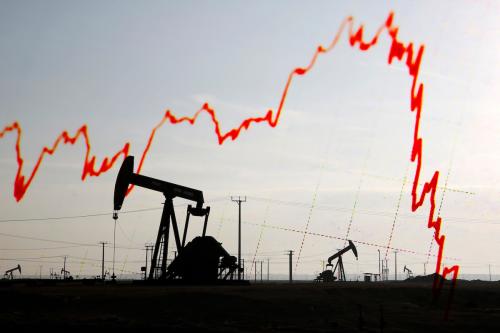In 2005, the World Bank and the IMF implemented the Low-Income Country Debt Sustainability Framework (LIC DSF). Many low-income countries—mostly in sub-Saharan Africa—had been through wrenching debt crises over the previous decade. They were in the final stages of getting their government balance sheets cleaned up through the Heavily Indebted Poor Countries (HIPC) initiative and the 2005 Multilateral Debt Relief Initiative (MDRI). Since debt crises could recur, the LIC DSF aimed to provide early warning and guide policy dialogue for corrective action. The paper proposing the LIC DSF argued for a specialized framework because LICs relied on official rather than private financing. Debt sustainability in these economies was “de-linked from the sentiments of the market.”
At the time, domestic debt markets were undeveloped and borrowing from private external sources was largely unavailable. Public debt was predominantly from external official sources at below-market interest rates. It therefore made sense to focus on public and publicly guaranteed (PPG) external debt. It also made sense to look at the present value (PV) of external debt rather than its nominal value because of its concessional nature. The PV was to be computed at a discount rate of 5%.
By 2017, the financing landscape for most of the 75 countries covered by the LIC DSF had changed completely. Governments and state-owned enterprises in many of these countries had been borrowing for several years from commercial sources, both in the domestic and international capital markets via Eurobonds and private banks. Even the poorer countries that did not issue Eurobonds were borrowing domestically in local currency on commercial terms. So the cost of borrowing was increasingly being determined by the market. Public indebtedness was increasing, and market concerns about yet another debt crisis was reflected in growing Eurobond spreads and rising domestic interest rates.
Fortunately, the LIC DSF was due for a review. This presented an ideal opportunity to change the focus from the narrow confines of PPG external debt to a broader notion of total public debt, domestic and external. First, development outcomes are naturally related to public debt via the quantity, quality, and composition of public spending. Second, focusing on public debt is consistent with macroeconomic logic. In the vast majority of LIC DSF countries, the public sector deficit is what determines the current account deficit, which in turn is the main determinant of external debt and its dynamics. Hence, a switch to public debt would amount to focusing on the cause rather than the symptom. Such a switch would have been consistent with the emphasis in the LIC DSF on the twin goals of avoiding debt distress—which requires getting the economic logic right, and ensuring good development outcomes—which requires focusing on public debt rather than just its external component.
We argue in a new working paper that the IMF and the World Bank missed the opportunity. The 2017 update of the LIC DSF kept the basic structure intact, with four out of the five debt distress indicators pertaining to PPG external debt and its PV at a discount rate of 5%. By 2017, this discount rate bore little resemblance to the marginal borrowing cost set by the market. Looking at the present value of debt-to-GDP in relation to thresholds has obscured the dynamics of the nominal public debt-to-GDP ratio, d, understanding which requires an explicit focus on the primary fiscal deficit-to-GDP ratio and (r-g), the difference between the real interest rate and the real growth rate of the economy. The focus on external debt levels also scuttles early warning about brewing public debt crises. In sum, shift the focus from external debt to public debt, and from the PV of debt to DSAs (debt sustainability analyses) based on the primary deficit and (r-g) to test if public debt-to-GDP is on an explosive path.
An illustration from Ghana
A study done in early 2016 showed that Ghana’s public debt was on an unsustainable path. The debt-to-GDP ratio, d, was high at 78% with r (8%) much greater than g (3%). This meant that the primary deficit, which had already been cut by 5 percentage points of GDP over 2014-15, would need to be cut by another 4 percentage points of GDP just to keep d at 78%, straining credulity. Market signals were understandably negative, with Ghana’s Eurobond yields above 15 percent in January 2016.
But the LIC DSF failed to capture this because of its focus on external debt levels and related distress thresholds based on cross-country regressions. In spite of Ghana’s frequent oil discoveries and its occasional but sizable upward revisions in GDP, d was once again at 79 percent in 2020. It was also on an explosive path, with r=6.3%, g=0.4% and the primary deficit at close to 9% of GDP. While some improvement could have been expected as the effects of the COVID pandemic subsided, the 2021 Debt Sustainability Analysis (DSA), based on the 2017 update of the LIC DSF, projected d to peak at 87% in 2024 before declining slowly to 81% in 2031. Yet the 2021 DSA rated external and public debt at high risk of debt distress while schizophrenically declaring d to be sustainable even in the baseline scenario. Such disconnects are not uncommon across DSAs based on the LIC DSF.
The LIC DSF failed to warn about the burgeoning public debt crisis in Ghana before and after its 2017 update. It also failed to raise key policy questions, e.g., whether borrowed resources are being used well, whether new oil revenues are supporting development, or just bailing the government out when it makes poor public spending decisions. Another important failure was in holding the government accountable for its management of the public finances by providing Ghanaians a thorough analysis of public debt sustainability and reflecting the results in a candid policy dialogue.
In December 2022, Ghana defaulted on its sovereign debt. While the COVID-19 pandemic and the most recent round of U.S. Fed tightening played a role, its fiscal fundamentals have been weak at least since 2016, as demonstrated above.
The Ethiopian case
Similarly, DSAs done under the LIC DSF framework both before and after the 2017 update concluded that Ethiopia was at high risk of external debt distress but public debt was sustainable. However, unsustainable debt dynamics were masked by two factors. First, an overvalued exchange rate kept d artificially low because 50% of debt was denominated in foreign currency. Second, financial repression resulted in highly negative real interest rates on local currency debt, making the dynamics look a lot better than they were. Moreover, rapid real GDP growth was being driven by debt-financed public sector investments in infrastructure. While such investments are essential for development, two questions must be answered. First, will the chosen projects pay off in terms of future growth and taxes? Second, are the loan maturities consistent with the long gestation periods involved?
Ironically, IMF-IDA DSAs for Ethiopia typically included a discussion of the importance of moving to market-determined interest rates and exchange rates as part of handing over the growth baton to the private sector, in line with the government’s strategy. But they failed to assess what this might mean for d and its dynamics. Our paper shows that the implications are serious, with Ethiopia potentially having both a solvency and a liquidity problem. Once again, the real problems were obscured because of the obsession with external debt. On December 26th, Ethiopia defaulted on its only Eurobond by failing to make a coupon payment.
An overdue overhaul
In a January 24, 2023 blog about advanced economies, the noted economist, Olivier Blanchard, emphasizes that “There may be no variable more important for macroeconomic policy than r−g.” This is true for LIC DSF countries today since the market determines the marginal cost of borrowing, but with two important differences. r in these countries typically incorporates high sovereign risk premia and reflects exchange rate movements because LIC DSF country governments borrow in foreign currencies as well as their own.
Today, with growing debt distress, slowing growth and rising interest rates, countries like Ghana, Ethiopia, and Zambia, international financial institutions, bilateral creditors, and markets need a framework for assessing debt sustainability that incorporates the central role of r-g in a multicurrency context with high sovereign risk. The current LIC DSF is not equipped to do this because of its focus on the PV of external debt-to-GDP levels rather than the level and dynamics of the nominal public debt-to-GDP ratio. The 2017 update clung to the original obsolete framework harking back to times when borrowing from official concessional external sources was the only game in town. The LIC DSF is due for another review. This time it should be comprehensively overhauled.
The LIC DSF is due for another review. This time it should be comprehensively overhauled.
The overhaul should involve two main fronts: first, a shift from external debt distress to DSAs based on primary deficits and (r-g) to test if public debt-to-GDP is on a sustainable path. Second, in view of the dependence on external commercial borrowing, this must be complemented with an assessment of the adequacy of foreign exchange reserves based on the standard metrics used for market-access countries, such as maturing external debt plus current account deficits relative to foreign exchange reserves combined with an assessment of market signals. LIC DSF countries would also need to regulate and monitor private external borrowing by banks and corporates, as experience in emerging markets has shown this to be a key source of vulnerability. The DSA plus the assessment of foreign exchange reserve adequacy would amount to a simultaneous assessment of solvency and international liquidity in LIC DSF countries. This could then form a solid basis for a policy dialogue on growth and the public investments needed for development within a sustainable macroeconomic framework.







Commentary
To fix the debt crisis in low-income countries, first fix the debt sustainability framework
January 3, 2024